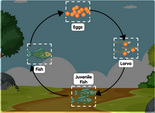Interesting Facts About the Capuchin Monkey Science Game
This science game helps children practice interesting facts about the capuchin monkey. The social behavior of the capuchin monkey is complex and characterized by a diverse repertoire of signs and signals, which includes species-typical vocalizations and innovative gestures. The cooperative interactions are vital to the reproductive success of both sexes, and they pervade many aspects of the capuchin's life. Learn about this amazing species. Listed below are some interesting facts about the capuchin monkey. This species lives in a variety of habitats, including forests, rainforests, and even urban areas.
Cebus apella
The tufted capuchin is the largest species of the capuchin family. Its name is given to a variety of variations that include the Guianan brown capuchin, the sajon apelle, and the brun capuchin. Groves lists six subspecies in its genus. A recent study suggests that the species' name is derived from the subspecies it belongs to.
Brown capuchin monkey
The Brown capuchin monkey, also known as the tufted capuchin or black-capped capuchin, is a species of monkey native to South America and the Caribbean islands of Trinidad and Margarita. This beautiful animal has long been a favorite among zoologists and researchers. Although this species of monkey may seem small and unassuming, it is actually a very large animal and is surprisingly common. Its habitat includes tropical rainforests, such as the Amazon, and the islands of Margarita and Trinidad.
Diurnal
The Diurnal behavior of Capuchins is characterized by the presence of rituals, shared food, and increased homogeneity within dyads. It should be noted that capuchins share food with each other approximately 60% of the time. This suggests that they may be genetically fit, as they share food with one another. In addition, this study highlights the important role of dyadic bond testing in capuchins.
Arboreal
Demographic processes are important factors affecting group behavior in many animals, including arboreal capuchins. The male-biased dispersal of white-faced capuchins is a prime example. Males emigrate from the group in which they were born, and typically switch groups multiple times during their lifetimes. This process is called habituation, and it takes approximately six months for a group to become accustomed to human observers. It takes much longer to make habituation successful with a second group, however.
Social
Susan Perry of UCLA has conducted an extensive study of the social behavior of the Capuchin monkey. Her research focused on novel forms of sexual interaction and tests of friendship, as well as novel interactions with infants. Her 27-year research in Liberia was made possible through the Lomas Barbudal Monkey Project. It is now possible to learn more about these fascinating creatures in the wild. Read on to learn more about capuchin monkey social behavior and its many fascinating traits.
Territorial
The Capuchin monkey exhibits several behaviors characteristic of a territorial species. It typically stays hidden in the forest vegetation and grooms itself, resting on tree branches and only descending to the ground for food and water. In contrast, males are territorial and fight to defend their territories. Juveniles are less prone to fighting than adults. While this behavior is characteristic of males, it is also a sign of a highly cooperative animal.
Easy to train
Training a capuchin monkey can be a breeze, as long as you know what to look for in a pet. Most people will not unload a capuchin monkey until it is past the juvenile stage. While it is adorable to see a baby monkey, be aware that your new pet will be tame for only 15 minutes. After that, you will need to start all over again! Here are some tips to keep your monkey from reverting to a wild state:











